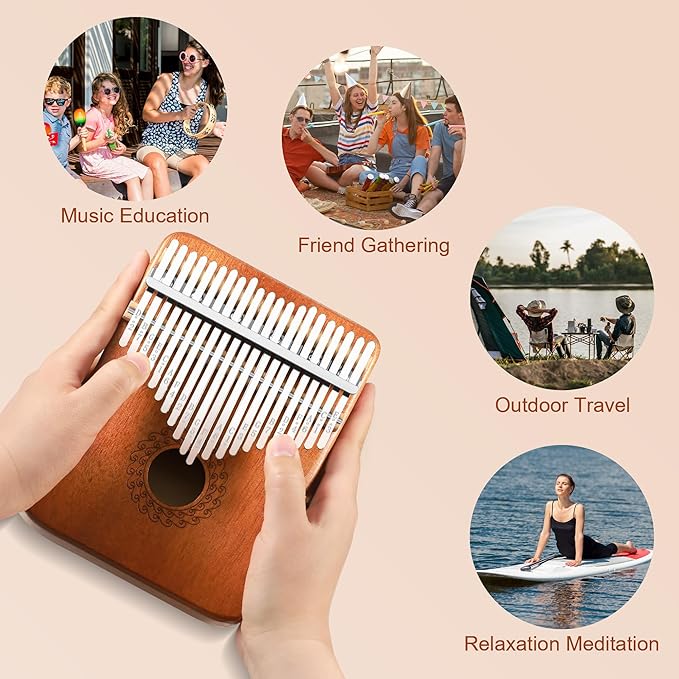What is a Kalimba? An Introductory Guide to the Kalimba

Have you ever scrolled through social media and heard an ethereal, soothing piece of music, accompanied by a video of someone using their thumbs to gently pluck the keys of a small wooden instrument? That instrument that has captured countless hearts is the kalimba, also affectionately known as the thumb piano.
If you're curious about it but don't know what it is, this guide will provide a detailed explanation.
So, What Exactly is a Kalimba?
The kalimba, also called a thumb piano, is a plucked idiophone instrument that originated in Africa. Its basic structure is very simple:
-
The Body: Typically made of wood, it comes in two types: solid-board and hollow-box. The material and design of the body directly affect the tone and resonance.
-
The Keys (Tines): These are metal strips of varying lengths fixed to the body. Plucking them with your thumbs produces clear, ethereal sounds of different pitches.
Due to its unique playing style—primarily using the two thumbs to pluck the keys—the name "thumb piano" is a vivid and apt description, which has helped it quickly become known to the public.
The History and Origin of the Kalimba
The kalimba is not a modern invention; its prototype can be traced back to an ancient African instrument called the Mbira. The Mbira has a long history and deep cultural significance in Africa, where it was widely used in tribal ceremonies, storytelling, and entertainment.
In the 1950s, British ethnomusicologist Hugh Tracey refined the African Mbira to have a more standardized tuning and promoted it to the Western world under the name "kalimba." The introduction of the kalimba made it easier for more people to access and fall in love with this charming African music.
Why is the Kalimba So Popular?
-
Easy to Start, No Music Theory Needed: This is the kalimba's biggest advantage. Its keys are usually marked with engravings or stickers, so even a complete beginner can easily play beautiful songs using simple sheet music (often a numbered or digital notation).
-
Ethereal and Soothing Sound: The kalimba's tone is clear and pleasant, as pure and ethereal as flowing water. This sound can effectively relieve stress and is often used for meditation, sleep aid, and music therapy.
-
Small and Portable, Play Anywhere: The kalimba is small and lightweight, making it easy to slip into a backpack. Whether you're traveling, taking a break at the office, or at a cafe in the afternoon, you can enjoy the fun of music anytime, anywhere.
-
Beautiful and Diverse, Full of Personality: The market offers kalimbas made from various materials (such as acacia, walnut, mahogany) and designs. Each has a unique grain and tone. They are not just instruments; they are also pieces of art full of personality.